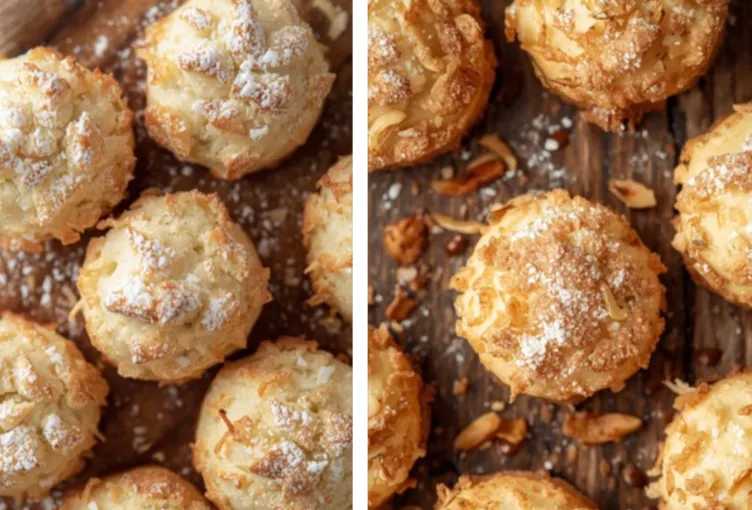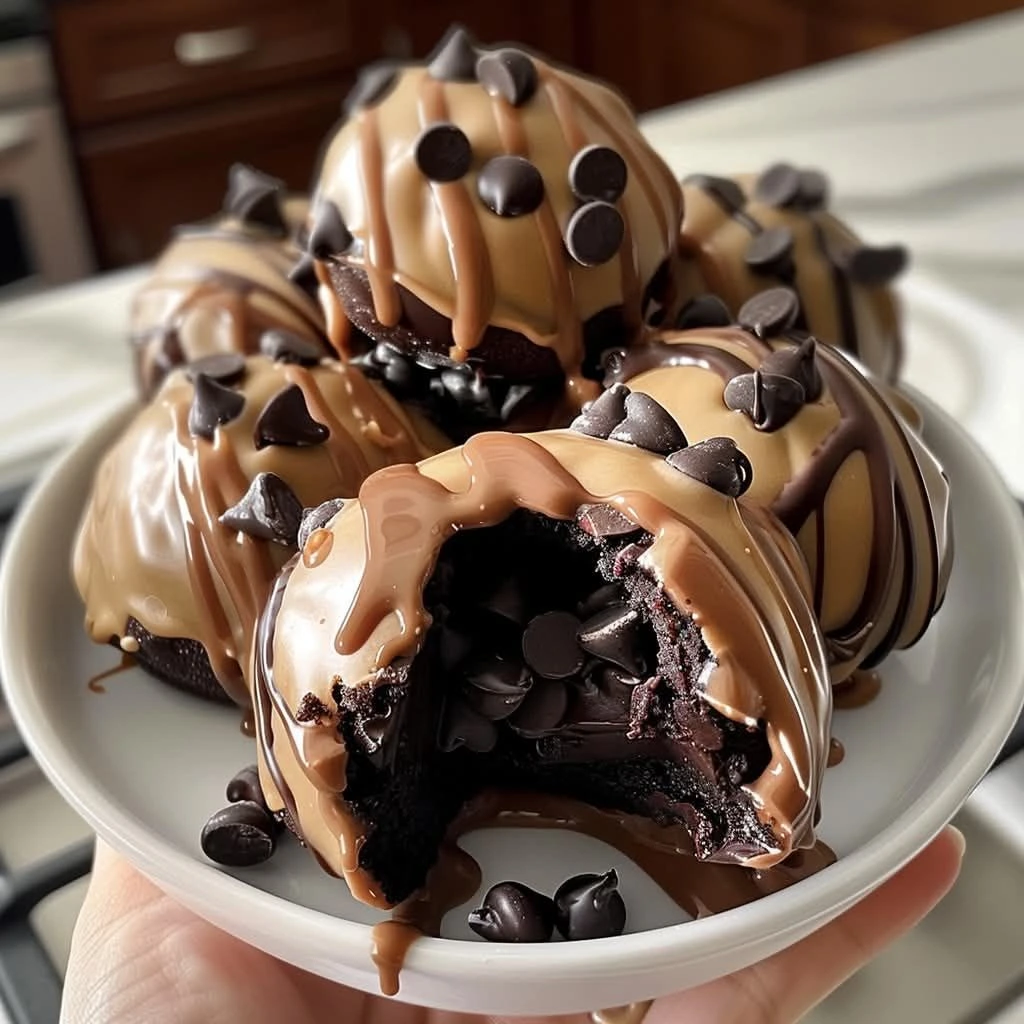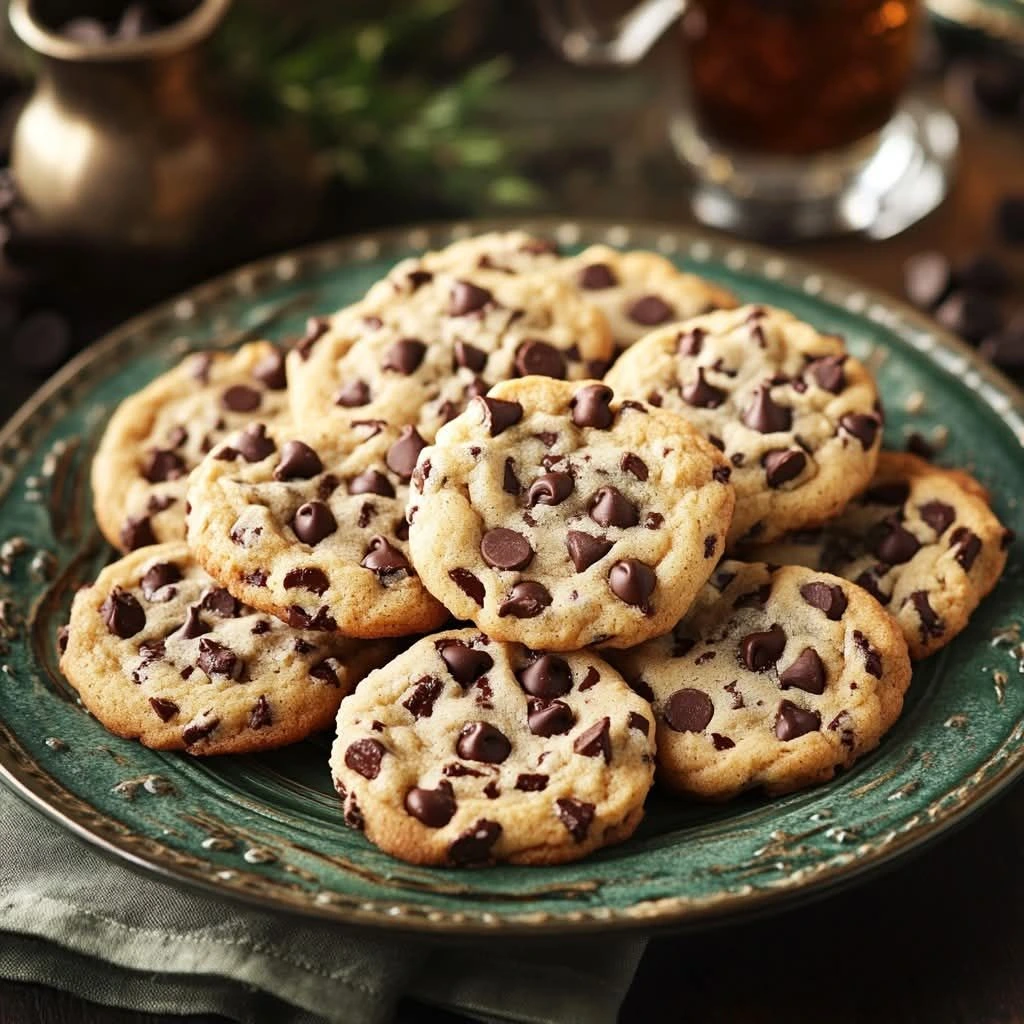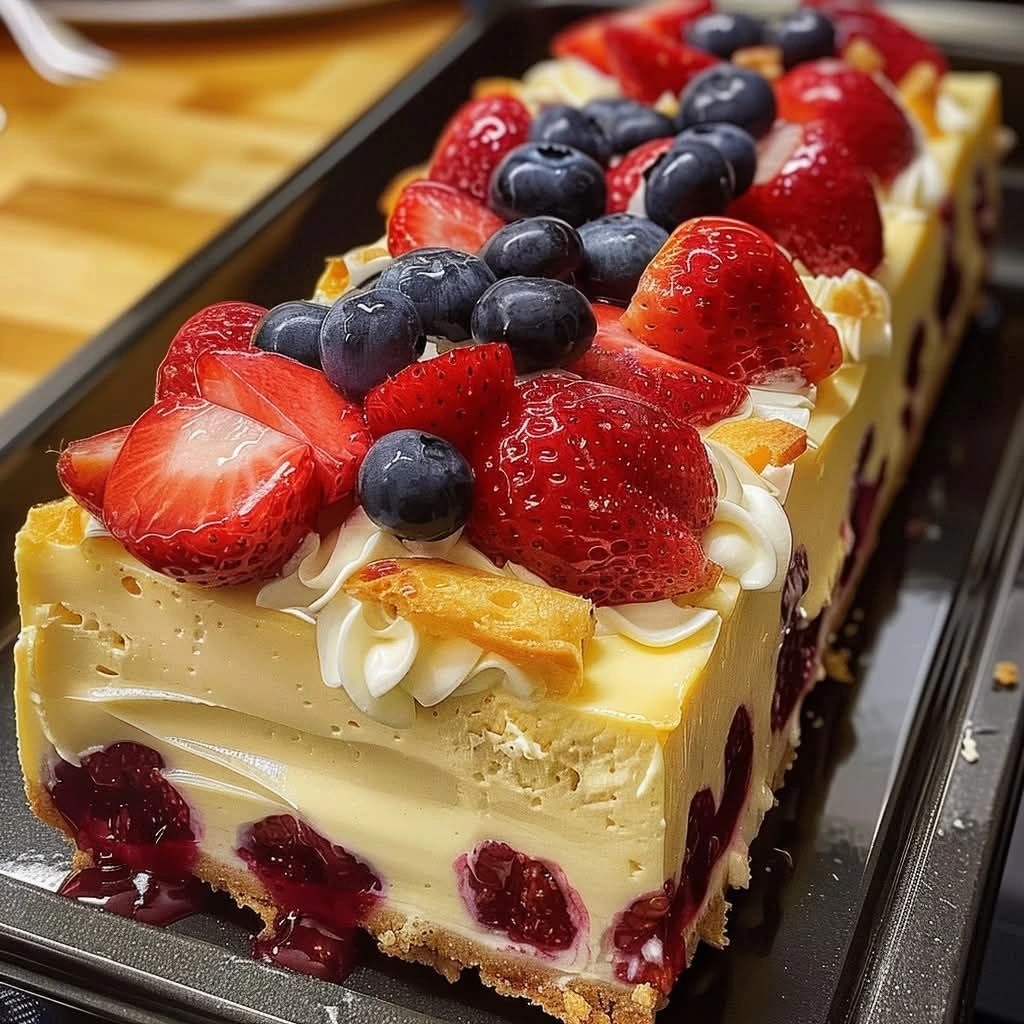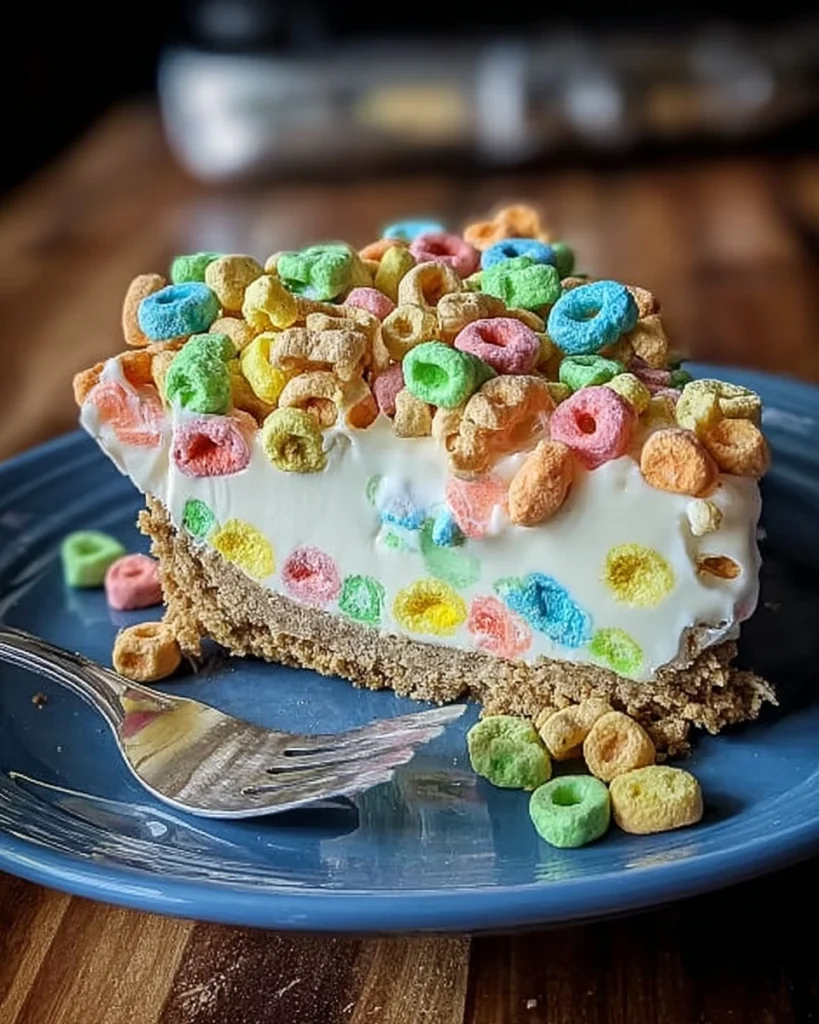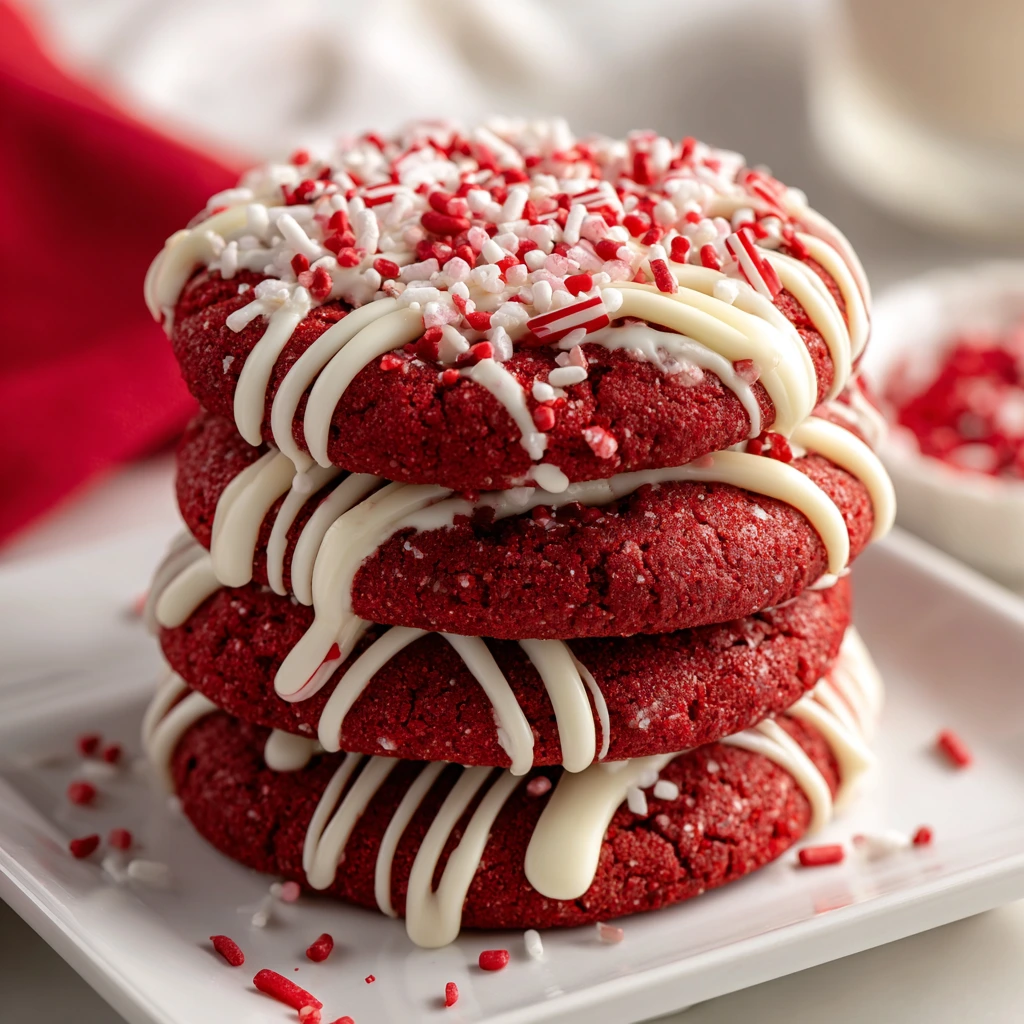There’s something magical about Coconut Macaroons—that delicate balance between chewy and crisp, the tropical aroma of toasted coconut, and the golden edges that promise sweet satisfaction. Whether you’ve tasted them at a bakery or stumbled upon them during the holidays, macaroons hold a special place in the world of simple yet indulgent desserts.
Unlike their French cousins, the colorful macarons, these Coconut Macaroons are rustic, rich, and deeply comforting. Made primarily with shredded coconut, egg whites, and sugar, they’re proof that you don’t need complicated ingredients to create something divine.
In this post, we’ll dive deep into everything you need to know about Coconut Macaroons—from their origin and variations to tips for perfect texture, and of course, a foolproof recipe that works every single time.
A Short History of Coconut Macaroons
Coconut macaroons trace their roots back to Italy, where the word “maccarone” or “maccherone” originally referred to a paste made from ground almonds—what we know today as marzipan. Over time, when coconuts became more accessible through trade routes, bakers began to experiment, substituting almonds with shredded coconut.
By the 19th century, the coconut macaroon had made its way to Europe and America, where it quickly gained popularity, especially among Jewish communities who adopted it as a Passover dessert (since it contains no flour or leavening).
Today, coconut macaroons are beloved around the world—whether dipped in chocolate, infused with lime, or baked plain and golden.
Why You’ll Love Coconut Macaroons
-
Simple Ingredients: Just coconut, sugar, egg whites, and a touch of vanilla.
-
Naturally Gluten-Free: Perfect for people avoiding wheat or flour.
-
Quick to Make: From bowl to oven in under 10 minutes.
-
Customizable: Add chocolate, nuts, or even tropical fruits for creative variations.
-
Perfect Texture: Crispy on the outside, soft and chewy inside.
If you’re looking for a cookie that’s both decadent and effortless, coconut macaroons are the answer.
Ingredients You’ll Need
Here’s what goes into the best Coconut Macaroons:
-
3 cups (200g) sweetened shredded coconut
-
2/3 cup (135g) granulated sugar
-
1/4 teaspoon salt
-
4 large egg whites
-
1 teaspoon pure vanilla extract
Optional additions:
-
Melted chocolate (for dipping or drizzling)
-
1/2 teaspoon almond extract for depth
-
Zest of 1 lemon or orange for brightness
Step-by-Step Coconut Macaroons Recipe
Step 1: Preheat and Prepare
Preheat your oven to 325°F (160°C). Line a baking sheet with parchment paper or a silicone baking mat.
Step 2: Mix the Ingredients
In a large bowl, combine shredded coconut, sugar, and salt. Add the egg whites and vanilla extract. Mix well with a spatula or your hands until the mixture is evenly moist and holds together when squeezed.
Step 3: Shape the Cookies
Using a small cookie scoop or tablespoon, drop mounds of the mixture onto the baking sheet, spacing them about 1 inch apart. For a more elegant look, shape them into little pyramids.
Step 4: Bake to Perfection
Bake for 20–25 minutes, or until the tops are lightly golden and the edges crisp. Watch carefully near the end—they brown quickly!
Step 5: Cool and Serve
Let the macaroons cool completely on the baking sheet before removing. Once cool, you can enjoy them as-is—or take them up a notch with chocolate.
Optional: Chocolate-Dipped Coconut Macaroons
If you want to make your macaroons even more irresistible, dip them in chocolate.
-
Melt 1 cup of dark or semi-sweet chocolate chips in a heatproof bowl over simmering water (double boiler) or microwave in 20-second bursts.
-
Dip the bottom of each cooled macaroon in the melted chocolate, then place on parchment paper.
-
Drizzle extra chocolate on top for decoration.
-
Chill in the fridge for 15 minutes to set.
The result? A luxurious, bakery-worthy treat that’s equal parts tropical and indulgent.
The Secret to Perfect Coconut Macaroons
Even though they’re simple to make, macaroons can be tricky to perfect. Here are expert tips to ensure success:
1. Use Sweetened Shredded Coconut
Unsweetened coconut can make macaroons dry and crumbly. Sweetened coconut adds moisture and caramelizes beautifully when baked.
2. Don’t Overmix the Batter
You want the mixture to be just moist enough to hold together—not soggy. Overmixing can break down the coconut and ruin the texture.
3. Watch the Baking Time
Macaroons go from golden to burnt fast. Start checking them around 18 minutes.
4. Cool Completely Before Storing
Warm macaroons can steam and soften when stored. Let them cool fully for crisp edges.
5. Store Properly
Keep in an airtight container at room temperature for up to 5 days—or freeze for up to 3 months.
Flavor Variations to Try
Coconut macaroons are endlessly adaptable! Here are some creative twists:
Chocolate Chip Coconut Macaroons
Add 1/2 cup mini chocolate chips to the mix for a sweet surprise.
Lemon Coconut Macaroons
Add lemon zest and a few drops of lemon juice for a tangy brightness.
Tropical Macaroons
Mix in dried pineapple or mango chunks for a tropical twist.
Toasted Coconut Macaroons
Toast half your coconut before mixing—it adds a deeper, nuttier flavor.
Honey Coconut Macaroons
Replace half the sugar with honey for a richer, floral sweetness.
Coconut Macaroons Around the World
Every culture seems to have its own version of this treat:
-
France: Uses almond paste for a denser, richer version.
-
Philippines: “Coconut macaroons” are mini cupcakes made with condensed milk.
-
India: Known as “Coconut Ladoo,” made with coconut and condensed milk, rolled into balls.
-
Latin America: “Cocadas,” often baked in large sheets and cut into squares.
This global love for coconut proves just how universal its sweetness is.
Coconut Macaroons for Every Occasion
These cookies are perfect for holidays, parties, and gifts.
Here are a few ideas:
-
Christmas: Dip in chocolate and sprinkle with crushed peppermint.
-
Easter: Shape into nests and fill with mini chocolate eggs.
-
Passover: Naturally flourless and ideal for celebration.
-
Valentine’s Day: Drizzle with white and dark chocolate hearts.
-
Gift Boxes: Pack in cellophane bags with ribbons for a thoughtful homemade present.
Pairing Ideas
Coconut macaroons pair wonderfully with:
-
Hot coffee or espresso
-
Chai tea
-
A scoop of vanilla or coconut ice cream
-
A drizzle of caramel sauce
For a beautiful dessert platter, serve alongside chocolate truffles and shortbread cookies.
Common Mistakes and How to Avoid Them
| Mistake | What Happens | How to Fix It |
|---|---|---|
| Using unsweetened coconut | Cookies turn dry | Use sweetened shredded coconut |
| Overbaking | Hard, brittle texture | Bake just until golden |
| Too much egg white | Soggy cookies | Stick to the recipe ratios |
| Removing while hot | Break apart | Cool completely before lifting |
| No parchment | Sticks to pan | Always use parchment paper |
Healthier Coconut Macaroons (Low-Sugar Version)
Want to make a lighter version? Try this variation:
-
Use unsweetened shredded coconut
-
Replace sugar with monk fruit sweetener or erythritol
-
Add 1 tablespoon of coconut oil for moisture
They’ll still be chewy and delicious—just lighter on calories and carbs.
Fun Facts About Coconut Macaroons
-
Coconut macaroons are gluten-free by nature, unlike most cookies.
-
Some chefs use sweetened condensed milk for richer texture.
-
They’re one of the most popular cookies sold during Passover.
-
Coconut is a symbol of good luck in many cultures—making these cookies extra special for festive occasions.
-
A batch can last up to 3 months in the freezer—perfect for meal prep or dessert emergencies!
Final Thoughts: The Joy of Coconut Macaroons
There’s a reason coconut macaroons never go out of style. They’re simple yet elegant, rustic yet indulgent, and universally loved. Every bite carries the essence of coconut—sweet, nutty, and utterly satisfying.

